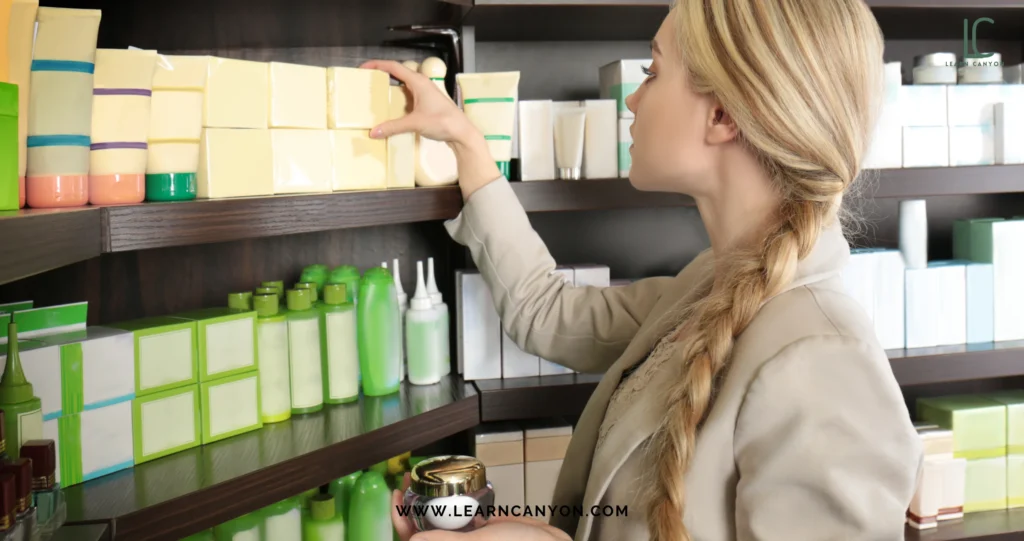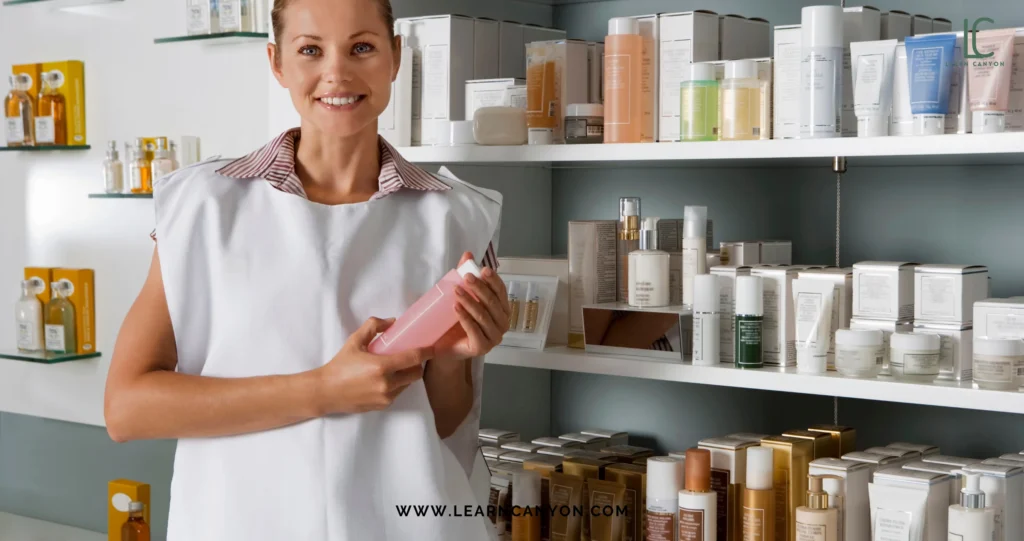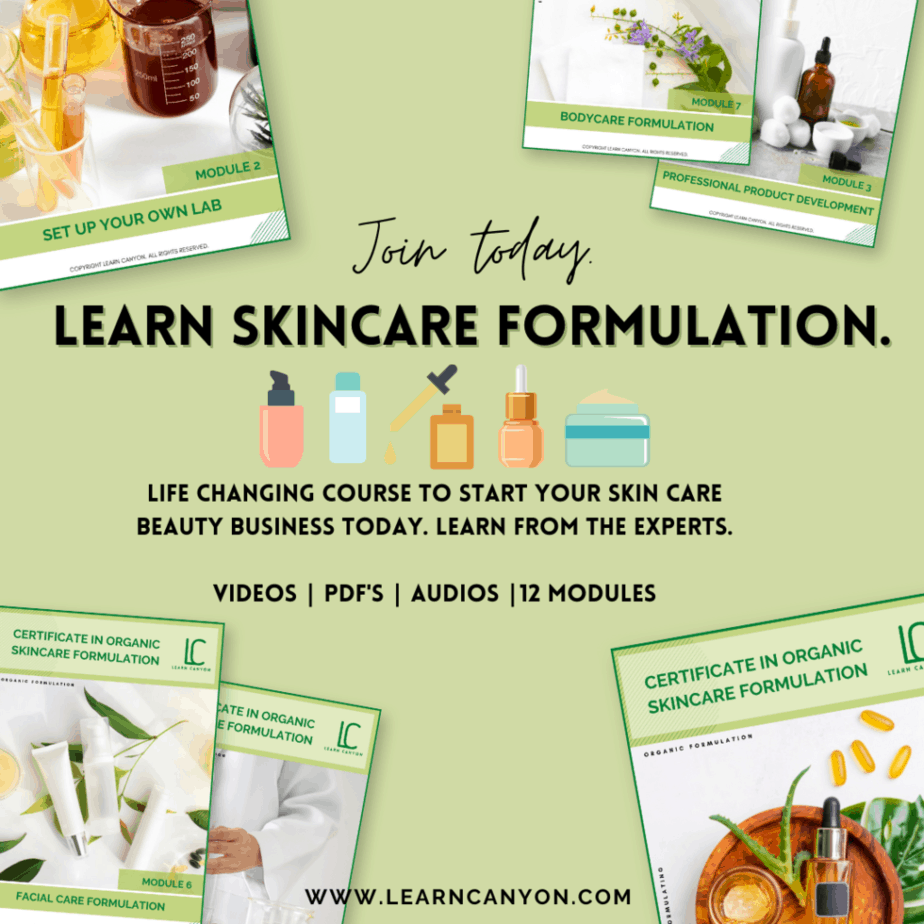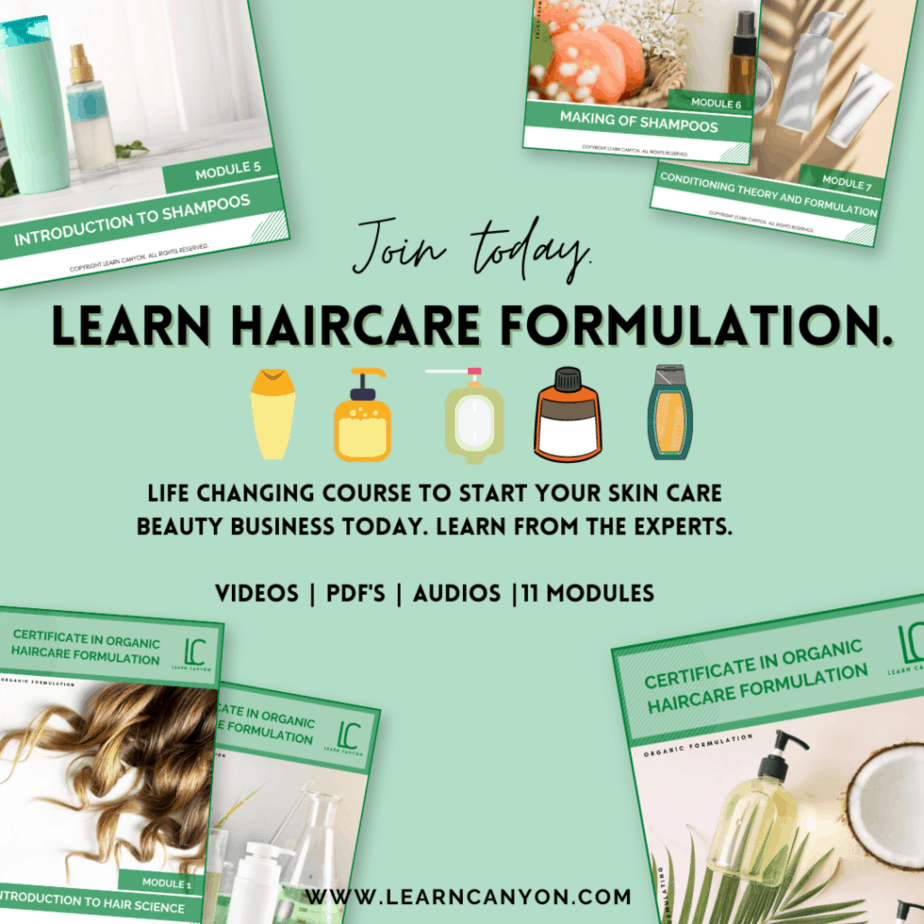Imagine walking into an outlet where each rack speaks to you, where beauty products are not displayed but presented in a way that responds to your deepest health and beauty needs.
This is the impact of efficient beauty merchandising on the health and beauty business. Mastering cosmetics marketing is not only useful; it is also necessary for success in a fiercely competitive cosmetic retail Shelves.
Navigating the retail landscape can be daunting for skincare brands looking to get their products on shelves. With so much competition and ever-changing consumer preferences, it’s important to have a solid strategy in place to increase the chances of success.
From understanding the market to building relationships with retailers, several key tips can help your skincare brand stand out and thrive in the retail space.
One of the first steps to getting your skincare brand on shelves is thoroughly researching the market and identifying potential retail partners that align with your brand’s values and target audience.
Understanding the needs and preferences of consumers in different retail environments can help you tailor your approach and product offerings to meet their needs better. Building strong relationships with retailers is also crucial, as it can help you secure prime shelf space and access valuable marketing opportunities within the store.
By demonstrating the value of your brand and products, you can increase the likelihood of securing partnerships with retailers and getting your skincare products on shelves.
Understanding Cosmetic Retail Landscape
The retail landscape for skincare products is dynamic and influenced by several key trends and factors. Here’s an overview of the current state:
1. Consumer Preferences and Trends
- Natural and Organic Products: There is a growing demand for natural, organic, and clean skincare products. Consumers are increasingly concerned about the ingredients in their skincare products and prefer those free from harmful chemicals.
- Personalization: Customized skincare routines and products tailored to individual skin types and concerns are gaining popularity. Brands are leveraging technology, such as AI and machine learning, to offer personalized skincare solutions.
- Sustainability: Eco-friendly packaging and sustainable sourcing of ingredients are becoming crucial selling points. Consumers are looking for brands that prioritize environmental responsibility.
- Anti-Aging Products: There is a consistent demand for anti-ageing products, including serums, creams, and treatments that promise to reduce wrinkles and improve skin elasticity.
- Men’s Skincare: The market for men’s skincare products is expanding, with more brands offering products specifically formulated for male skin.
2. Market Channels
- E-commerce: Online sales of skincare products are surging. E-commerce platforms, direct-to-consumer (DTC) websites, and social media marketing are vital channels for reaching consumers.
- Brick-and-Mortar Stores: While e-commerce is growing, physical retail stores still play a significant role. Department stores, speciality beauty retailers, and drugstores are key outlets for skincare products.
- Subscription Services: Subscription boxes and services offering curated skincare products regularly are becoming popular, providing convenience and the opportunity to try new products.
3. Technology and Innovation
- AI and Skin Analysis Tools: Brands are using AI to provide virtual skin analysis, helping consumers identify their skin concerns and recommend suitable products.
- Augmented Reality (AR): AR technology allows consumers to virtually try on skincare products, see potential results, and make more informed purchasing decisions.
- Advanced Formulations: Innovations in skincare formulations, such as incorporating probiotics, peptides, and plant-based actives, are driving product development.
4. Competitive Landscape
- Established Brands vs. Indie Brands: Large, established brands continue to dominate the market, but indie and niche brands are gaining traction by offering unique, high-quality, and often more natural products.
- Celebrity and Influencer Brands: The influence of celebrities and social media influencers in launching skincare lines has created a competitive yet thriving segment.
- Private Label: Retailers are increasingly developing their private-label skincare products, offering quality alternatives at competitive prices.
5. Regional Differences
- North America: High demand for premium and anti-ageing products, with a strong preference for organic and natural formulations.
- Europe: Emphasis on sustainability and eco-friendly products, with regulations influencing ingredient transparency.
- Asia-Pacific: Rapidly growing market with a focus on innovative ingredients and technologies. K-beauty and J-beauty trends significantly impact consumer preferences.
6. Regulatory Environment
- Ingredient Regulations: Different regions have varying regulations regarding skincare ingredients. Compliance with these regulations is crucial for brands operating internationally.
- Marketing Claims: Regulatory bodies monitor the claims brands make about their products, ensuring they are not misleading and are backed by scientific evidence.

Importance of Understanding Market Trends and Consumer Preferences
Understanding market trends and consumer preferences in skincare retail is crucial for several reasons. It helps businesses stay competitive, meet consumer needs, and adapt to changes in the market. Here’s a detailed look at the importance:
1. Staying Competitive
- Innovation and Differentiation: By understanding current trends, brands can innovate and differentiate their products from competitors. This helps in creating unique value propositions that attract consumers.
- Early Adoption of Trends: Recognizing emerging trends early allows brands to capitalize on new opportunities, gaining a first-mover advantage in the market.
2. Meeting Consumer Needs
- Targeted Product Development: Insights into consumer preferences guide the development of products that meet specific needs, such as anti-ageing, hydration, or acne treatment. This increases the likelihood of product success.
- Personalization: Consumers increasingly seek personalized skincare solutions. Understanding their preferences helps brands offer customized products and recommendations, enhancing customer satisfaction and loyalty.
3. Adapting to Market Changes
- Responsive Marketing Strategies: Awareness of market trends allows brands to adjust their marketing strategies to align with consumer interests. This includes tailoring advertising campaigns, social media content, and influencer partnerships to resonate with current trends.
- Agility in Product Offerings: The skincare market is dynamic, with changing consumer demands. Brands that understand these changes can quickly adapt their product offerings, ensuring they remain relevant.
4. Enhancing Customer Loyalty
- Building Trust: Brands that demonstrate a deep understanding of their consumers’ needs and preferences are more likely to build trust. This fosters long-term loyalty and repeat business.
- Engaging Experiences: Insights into preferences help create engaging and personalized shopping experiences, both online and in-store. This enhances the overall customer experience and encourages brand loyalty.
5. Optimizing Inventory and Supply Chain
- Demand Forecasting: Understanding trends helps in accurately forecasting demand, optimizing inventory levels, and reducing the risk of overstocking or stockouts.
- Efficient Supply Chain Management: Knowledge of consumer preferences and market trends ensures that the supply chain is aligned with current demand, improving efficiency and reducing costs.
6. Identifying Growth Opportunities
- New Market Segments: Trends can reveal untapped market segments, such as men’s skincare or eco-conscious consumers, providing opportunities for growth and expansion.
- Geographic Expansion: Understanding regional preferences helps brands tailor their products and marketing strategies for successful entry into new geographic markets.
7. Sustainability and Ethical Practices
- Consumer Expectations: Increasingly, consumers expect brands to adopt sustainable and ethical practices. Understanding this trend helps brands align their values with those of their consumers, enhancing their brand image.
- Regulatory Compliance: Awareness of trends in sustainability and ingredient transparency ensures compliance with evolving regulations and standards, reducing the risk of legal issues.
Retail Channels: Types of COSMETIC retail channels and their pros and cons
The cosmetic retail landscape is diverse, with multiple channels offering different advantages and disadvantages. Here’s a detailed look at the various types of cosmetic retail channels:
1. Department Stores
Department stores, such as Macy’s, Nordstrom, and Bloomingdale’s, have dedicated sections for cosmetics and beauty products.
Pros:
- Wide Selection: Offer a broad range of brands and products, giving consumers many choices.
- Prestige: Often carries high-end, luxury brands that attract affluent customers.
- Personalized Service: Provide in-store beauty advisors and makeup artists who offer personalized consultations and product recommendations.
- Trust and Reliability: Established reputation and customer trust.
Cons:
- Higher Prices: Products tend to be more expensive compared to other retail channels.
- Limited Reach: Physical locations may not be accessible to all consumers, especially in rural areas.
- Less Convenience: Requires consumers to visit the store physically, which can be less convenient than online shopping.
2. Specialty Stores
Speciality stores like Sephora and Ulta Beauty focus exclusively on beauty and cosmetic products.
Pros:
- Expertise: Staff are often highly knowledgeable about beauty products and trends.
- Exclusive Products: Offer exclusive brands and products not available in other retail channels.
- Experiential Shopping: Provide a hands-on shopping experience with testers and samples.
- Loyalty Programs: Often have attractive loyalty programs that reward frequent shoppers.
Cons:
- Higher Prices: Prices can be higher than those found in mass-market or drugstore channels.
- Limited Product Range: Focus primarily on beauty products, so consumers need to shop elsewhere for other needs.
- Availability: Physical locations may not be as widespread as department stores or mass-market retailers.
3. Drugstores and Mass-Market Retailers
Retailers like CVS, Walgreens, Target, and Walmart sell cosmetics alongside a wide range of other products.
Pros:
- Convenience: Widely available locations make them easily accessible.
- Affordability: Generally offer lower prices and frequent promotions.
- Wide Audience: Attract a broad customer base due to their varied product offerings.
Cons:
- Limited High-End Options: Typically do not carry luxury or premium cosmetic brands.
- Less Expertise: Staff may not have specialized knowledge about beauty products.
- Less Personalized Service: Limited opportunities for personalized consultations or product recommendations.
4. Online Retail
E-commerce platforms like Amazon, brand-specific websites, and beauty-focused online retailers like Glossier and ColourPop.
Pros:
- Convenience: Shop from anywhere at any time, making it extremely convenient.
- Wide Selection: Access to a vast range of products from global brands.
- Competitive Pricing: Often have lower prices, discounts, and special offers.
- Customer Reviews: Access to reviews and ratings helps consumers make informed decisions.
Cons:
- Lack of Physical Testing: Inability to try products before purchasing can lead to dissatisfaction.
- Shipping Times and Costs: Delays and additional costs associated with shipping.
- Product Authenticity: Risk of counterfeit products, especially on third-party platforms.
- Less Personalized Service: Limited personal interaction and guidance compared to in-store shopping.
5. Direct-to-consumer (DTC)
Brands selling directly to consumers through their websites, like Glossier, The Ordinary, and Fenty Beauty.
Pros:
- Brand Control: Brands have full control over the customer experience and branding.
- Exclusive Offers: Often provide exclusive products, limited editions, and special deals.
- Personalization: Can offer personalized product recommendations and loyalty programs.
- Higher Margins: Eliminate middlemen, leading to better profit margins for brands.
Cons:
- Limited Reach: This may not reach as wide an audience as multi-brand retailers.
- Marketing Costs: High costs associated with marketing and customer acquisition.
- Shipping Issues: Similar to online retail, issues with shipping times and costs.
6. Subscription Boxes
Services like Birchbox, Ipsy, and Boxycharm deliver curated beauty products to subscribers.
Pros:
- Discovery: Help consumers discover new and niche products they might not find otherwise.
- Convenience: Regular delivery of curated products provides convenience.
- Personalization: Often tailored to individual preferences and beauty profiles.
Cons:
- Surprise Factor: Consumers may not always like or need the products they receive.
- Commitment: Requires a subscription, which might not suit everyone.
- Limited Choice: Consumers have less control over what they receive.

Developing a Winning Product Strategy
Effective Strategies for Getting Your Skincare Brand on Store Shelves (USP)
Unique Selling Proposition is a marketing concept that emphasises a product’s or service’s distinguishing characteristics or benefits above its competitors. It’s all about highlighting what makes a product or service unique and why buyers should choose it over competitors. It’s like the secret sauce that makes something unique on the market.
In the skincare market, a unique selling point might be a brand that employs only natural and organic ingredients, such as Learn Canyon. This distinct selling point appeals to people who value utilising clean, ecologically friendly skincare products. Learn Canyon differentiates out by providing products free of harsh chemicals and unnatural additives, catering to people looking for a more natural way of handling skincare. It’s all about caring for your skin while also protecting the environment!
Another example; is a brand that specializes in skin. Their unique combination of gentle and hypoallergenic skincare treatments is intended to reduce inflammation and soothe sensitive skin types. This USP would appeal to people who suffer from sensitivity difficulties and are looking for products that address their special demands. It’s all about offering practical skincare treatments while focusing on skin health and comfort!
To stand out from the crowd, it is critical to create a skincare brand with a unique selling point. Here’s how;
- User convenience:
Concentrate on user convenience by providing items that are simple to use and incorporated into their skincare regimens. Consider developing a multi-purpose product or packaging that is portable and suitable for use on the go.
- Packaging:
Understand that first impressions count! Create appealing packaging that stands out on retail shelves or online marketplaces. To get people’s attention and make your brand remember, use eye-catching hues, distinctive shapes, or novel materials.
- Efficacy-Result Focused:
The ultimate purpose of skincare is to produce outcomes. A unique selling point that stresses the efficacy of the items, supported by scientific studies or demonstrated results, builds credibility and consumer loyalty.
- Reasonable-Targeted Pricing:
Assess your target audience’s purchasing power, and make sure your pricing is in line with the worth your product provides. Offering cheap prices can entice clients and make your business more accessible.
- Clean/Transparent:
Participate in the clean and transparent beauty revolution by being open and truthful about the components and manufacturing methods. In a world where consumers are becoming more sensitive about what they put on their skin, a clean and transparent ingredient list becomes a crucial differentiator. It’s not just about the product’s functionality; it’s also about how it performs.
- Quality – The long-term success USP:
The long-term USP stresses your products’ quality. Use high-quality ingredients and production procedures to maintain the shelf life and efficacy of your beauty goods. Quality will help your brand stand out and keep people coming back.
Building Relationships with Cosmetic Retailers
When it comes to building relationships with cosmetic retailers, first you need to do your Unique Selling Proposition and define your target market. Then the next steps are as follows;
- Identify Potential Retail Channels
- Department Stores: Ideal for high-end and luxury brands. Examples include Nordstrom, Bloomingdale’s, and Saks Fifth Avenue.
- Speciality Stores: Suitable for brands looking to offer a personalized shopping experience. Examples include Sephora and Ulta Beauty.
- Drugstores and Mass-Market Retailers: Suitable for budget-friendly brands. Examples include CVS, Walgreens, Target, and Walmart.
- Online Retail: Suitable for all types of brands, especially direct-to-consumer (DTC) brands. Examples include Amazon, brand-specific websites, and beauty-focused e-commerce platforms.
- Subscription Boxes: Great for new and niche brands looking to gain exposure. Examples include Birchbox, Ipsy, and Boxycharm.
- Research Each Retailer
- Product Range and Positioning: Analyze the types of brands and products they currently carry to determine if your brand fits their portfolio.
- Customer Base: Understand the retailer’s customer demographics to ensure alignment with your target market.
- Retailer’s Brand Values: Ensure the retailer’s values and practices align with your brand’s ethos, especially if your brand emphasizes sustainability or ethical sourcing.
- Evaluate Retailer Requirements and Policies
- Shelf Space and Placement: Understand how products are displayed and the competition for shelf space.
- Vendor Requirements: Check for specific vendor requirements, such as packaging standards, labelling, and compliance with regulations.
- Financial Terms: Consider the retailer’s financial terms, including margins, payment terms, and potential promotional fees.
- Approach and Pitch to Retailers
- Tailored Pitch: Create a compelling pitch that highlights your brand’s unique value proposition, market demand, and alignment with the retailer’s customer base.
- Samples and Demos: Provide product samples and, if possible, demonstrations to showcase the efficacy and appeal of your products.
- Market Data: Present data and insights about market trends, consumer preferences, and the potential demand for your products.
- Leverage Networking and Industry Events
- Trade Shows and Expos: Participate in beauty and cosmetic trade shows to meet potential retail partners and showcase your products.
- Industry Connections: Use your industry network to get introductions and referrals to key contacts within target retailers.
- Negotiate and Secure Partnerships
- Contract Terms: Carefully negotiate terms that are favourable for both parties, including pricing, promotional support, and return policies.
- Marketing and Promotion: Discuss opportunities for joint marketing and promotional activities to boost visibility and sales.
- Long-Term Relationship Building: Focus on building a strong, long-term relationship with the retailer to ensure ongoing collaboration and support.

Cosmetic Marketing and Promotion
Implementing effective marketing retail distribution strategies to drive cosmetic retail sales:
Implementing effective marketing and retail distribution strategies is crucial for driving cosmetic retail sales. Here’s a detailed guide to help you develop and execute these strategies:
1. Understand Your Target Market
- Market Research: Conduct thorough market research to understand your target audience’s demographics, preferences, and purchasing behaviour.
- Customer Segmentation: Segment your market based on factors like age, income, skin type, and beauty preferences to tailor your marketing efforts.
2. Select the Right Retail Channels
- Channel Suitability: Choose retail channels that align with your brand’s positioning and target market. This could include department stores, speciality stores, drugstores, online platforms, and subscription boxes.
- Multi-Channel Strategy: Utilize multi-channel retail distribution strategies to reach a broader audience. Ensure a cohesive brand experience across all channels.
3. Optimize Product Placement and Merchandising
- In-Store Placement: Work with retailers to secure prominent shelf space and eye-level placement. End-cap displays and dedicated sections can enhance visibility.
- Visual Merchandising: Invest in attractive packaging and display materials to draw attention. Use point-of-sale (POS) displays, testers, and interactive elements to engage customers.
4. Leverage Digital Marketing
- Social Media Marketing: Use platforms like Instagram, Facebook, and TikTok to build brand awareness and engage with your audience. Collaborate with beauty influencers and run targeted ads.
- Content Marketing: Create valuable content, such as beauty tips, tutorials, and product reviews, to attract and educate your audience. Use blogs, videos, and social media posts.
- Email Marketing: Develop an email marketing strategy to keep your customers informed about new products, promotions, and events. Personalize emails based on customer preferences and behaviour.
5. Implement Omnichannel Strategies
- Seamless Integration: Ensure a seamless shopping experience across online and offline channels. Customers should be able to browse online and purchase in-store, or vice versa.
- Click-and-Collect: Offer options like click-and-collect, where customers can buy online and pick up in-store, to enhance convenience.
6. Use Data-Driven Marketing
- Customer Insights: Use data analytics to gain insights into customer behaviour, preferences, and trends. This can help you tailor your marketing strategies and product offerings.
- Personalization: Personalize marketing messages and product recommendations based on customer data to increase engagement and sales.
7. Offer Promotions and Discounts
- Sales Events: Organize sales events and special promotions, such as holiday discounts, buy-one-get-one-free offers, and loyalty programs, to drive sales.
- Bundling: Offer product bundles or kits at a discounted price to encourage customers to purchase multiple items.
8. Engage in Public Relations and Media Outreach
- Press Releases: Issue press releases to announce new product launches, brand milestones, and collaborations.
- Media Coverage: Seek coverage in beauty magazines, blogs, and online publications to increase brand visibility and credibility.
9. Participate in Trade Shows and Events
- Industry Events: Attend trade shows, beauty expos, and industry events to showcase your products, network with potential retail partners, and stay updated on industry trends.
- Pop-Up Shops: Set up pop-up shops in high-traffic locations to create buzz and allow customers to experience your products firsthand.
10. Provide Excellent Customer Service
- Training: Train retail staff to be knowledgeable about your products and provide excellent customer service. They should be able to offer personalized recommendations and address customer queries effectively.
- After-Sales Support: Offer robust after-sales support, including easy returns and exchanges, to enhance customer satisfaction and loyalty.
11. Utilize Influencer and Affiliate Marketing
- Influencer Partnerships: Collaborate with beauty influencers who align with your brand to reach their followers and build credibility.
- Affiliate Programs: Implement an affiliate marketing program where affiliates earn a commission for driving sales through their referral links.
12. Monitor and Adapt Strategies
- Performance Metrics: Regularly monitor key performance indicators (KPIs) such as sales, customer acquisition costs, and return on investment (ROI) to assess the effectiveness of your strategies.
- Feedback Loop: Gather feedback from customers and retail partners to identify areas for improvement and adapt your strategies accordingly.
Ensuring Retail Success In the Skincare Business
Monitoring sales performance and adjusting strategies accordingly;
Monitoring sales performance and adjusting effective Strategies for getting your skincare brand on store shelves is crucial for ensuring continued success in the cosmetic retail market. Here’s a detailed guide on how to effectively monitor and adjust your strategies:
1. Track Sales Performance Metrics
- Sales Data: Regularly review sales data, including total sales, sales by product, sales by region, and sales by retail channel.
- Customer Acquisition Cost (CAC): Monitor the cost of acquiring new customers through various marketing channels.
- Customer Lifetime Value (CLV): Calculate the total revenue expected from a customer over the entire duration of their relationship with your brand.
- Conversion Rates: Track conversion rates from various marketing campaigns and sales channels.
- Inventory Turnover: Monitor how quickly inventory is sold and replaced over a given period.
2. Utilize Data Analytics Tools
- Point-of-Sale (POS) Systems: Use POS systems to collect real-time sales data.
- Customer Relationship Management (CRM) Systems: Implement CRM systems to track customer interactions and sales performance.
- Analytics Software: Use analytics tools like Google Analytics, Power BI, or Tableau to visualize and analyze sales data.
3. Gather and Analyze Customer Feedback
- Surveys and Reviews: Collect customer feedback through surveys, reviews, and ratings to understand their satisfaction and preferences.
- Social Listening: Monitor social media platforms for mentions of your brand and products to gauge public sentiment.
4. Identify Trends and Patterns
- Seasonal Trends: Identify seasonal sales patterns and adjust inventory and marketing efforts accordingly.
- Product Performance: Determine which products are bestsellers and which are underperforming.
- Customer Preferences: Analyze changes in customer preferences and emerging trends in the skincare market.
5. Adjust Marketing Strategies
- Targeted Campaigns: Use insights from sales data and customer feedback to create targeted marketing campaigns.
- Channel Optimization: Allocate marketing budgets to the most effective channels based on performance data.
6. Optimize Product Assortment and Inventory Management
- Product Assortment: Adjust your product lineup based on sales performance and customer feedback. Introduce new products or discontinue underperforming ones.
- Inventory Management: Optimize inventory levels to meet demand without overstocking. Use inventory management systems to track stock levels and automate reordering.
7. Enhance In-Store Experience
- Visual Merchandising: Regularly update in-store displays and merchandising to keep them fresh and engaging.
- Staff Training: Continuously train retail staff to improve product knowledge and customer service skills.
- Promotional Events: Host in-store events, demonstrations, and sampling sessions to attract and engage customers.
8. Evaluate and Adjust Pricing Strategies
- Competitive Analysis: Regularly compare your pricing with competitors and adjust as needed to remain competitive.
- Dynamic Pricing: Implement dynamic pricing strategies to optimize prices based on demand, competition, and other market factors.
9. Implement Continuous Improvement Practices
- Regular Reviews: Schedule regular reviews of sales performance and strategy effectiveness.
- Agile Adjustments: Be prepared to make quick adjustments to strategies based on performance data and market changes.
- Innovation: Continuously innovate by introducing new products, improving existing ones, and exploring new marketing and distribution channels.
Final Thoughts
From the above information, we understood that securing shelf space for your skincare brand in a competitive retail environment is a multifaceted challenge that requires strategic planning, innovation, and persistent effort. Some of the key takeaways to ensure your cosmetic brand stands out and gains a foothold in the market were discussed above such as comprehensive market research, strong brand identity, effective marketing strategies, building retailer relationships, optimizing product placement, leveraging data and feedback, enhancing customer experience, and commitment of continuous improvement.
These strategies, can effectively navigate the retail landscape and secure a strong presence for your skincare brand on store shelves. With a well-defined approach, dedication, and a customer-centric mindset, your brand can achieve sustainable growth and success in the competitive skincare market.
Our formulation school, Learn Canyon, can help you profoundly navigate retail to get your cosmetic items on the store shelves in no time. We not only offer advanced certification courses to help you build a successful skincare brand but also offer you well-advanced lab training to develop various cosmetic items sourced from natural resources that encourage cruelty-free protocols.
So, why wait? Enrol in our courses now!
References
- https://www.leafio.ai/blog/beauty-merchandising/
- https://aadhunikayurveda.com/every-skincare-brand-needs-unique-selling-proposition-to-become-successful.html
- https://auroracos.com/how-to-build-a-successful-relationship-with-your-beauty-product-supplier/#:~:text=Respect%20the%20Supplier’s%20Reputation&text=Respect%20not%20only%20ensures%20that,the%20quality%20of%20their%20products.











